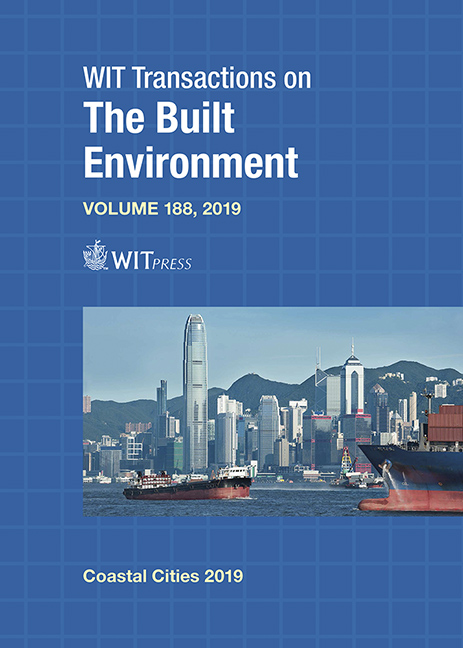FRAMEWORK FOR THE EVALUATION OF THE QUALITY OF PEDESTRIAN ROUTES FOR THE SUSTAINABILITY OF PORT–CITY SHARED AREAS
Price
Free (open access)
Transaction
Volume
188
Pages
12
Page Range
11 - 22
Published
2019
Paper DOI
10.2495/CC190021
Copyright
WIT Press
Author(s)
MATTEO IGNACCOLO, GIUSEPPE INTURRI, ELENA COCUZZA, NADIA GIUFFRIDA, VINCENZA TORRISI
Abstract
In recent years, there have been several changes that deeply affected the port-city relationship, due to the evolution of maritime transports, traffic volumes and port infrastructures. Thanks to the expansion of the cruise and yachting sectors and the redevelopment of waterfront and port spaces, shared areas have assumed mixed functions and activities that are attractive for passengers/tourists but potentially also for other users, such as citizens. Often, the unplanned distribution of these heterogeneous functions and activities results in overlapping and intersecting flows of freights/passengers, with the generation of criticalities for vulnerable users. Commonly, each passenger/tourist, and generally more pedestrians, are independent decision-making units, and their route choices depend not only on their trip destination but also on the on the attractiveness of the existing activities, on the geometric characteristics of the path and, generally, on its Level of Service (LOS) and quality, contrary to freight routes, which are generally based on minimum generalized cost values. Thus, having a good non-motorized accessibility is a determining factor for port-city sustainable development. This paper focuses its attention on pedestrian flows in port-city areas and the construction of a methodological framework to evaluate nonmotorized accessibility. The framework analyses the quality of pedestrian displacements, both through the LOS and a utility measure, by taking advantage of Geographic Information System (GIS) tools. The methodology has been tested on the case study of Catania, a medium-sized city located in the south of Italy, whose port is located in an area that has a strategic role due to its proximity to the historic centre. The proposed framework can contribute to providing a guide to transport and urban planners, local and port authorities and decision-makers in port-city planning, identifying criticalities and solutions to enhance the non-motorized accessibility and sustainability of the port systems and urban areas.
Keywords
non-motorized accessibility, quality of pedestrian/bicycle flows, port/city relationship





